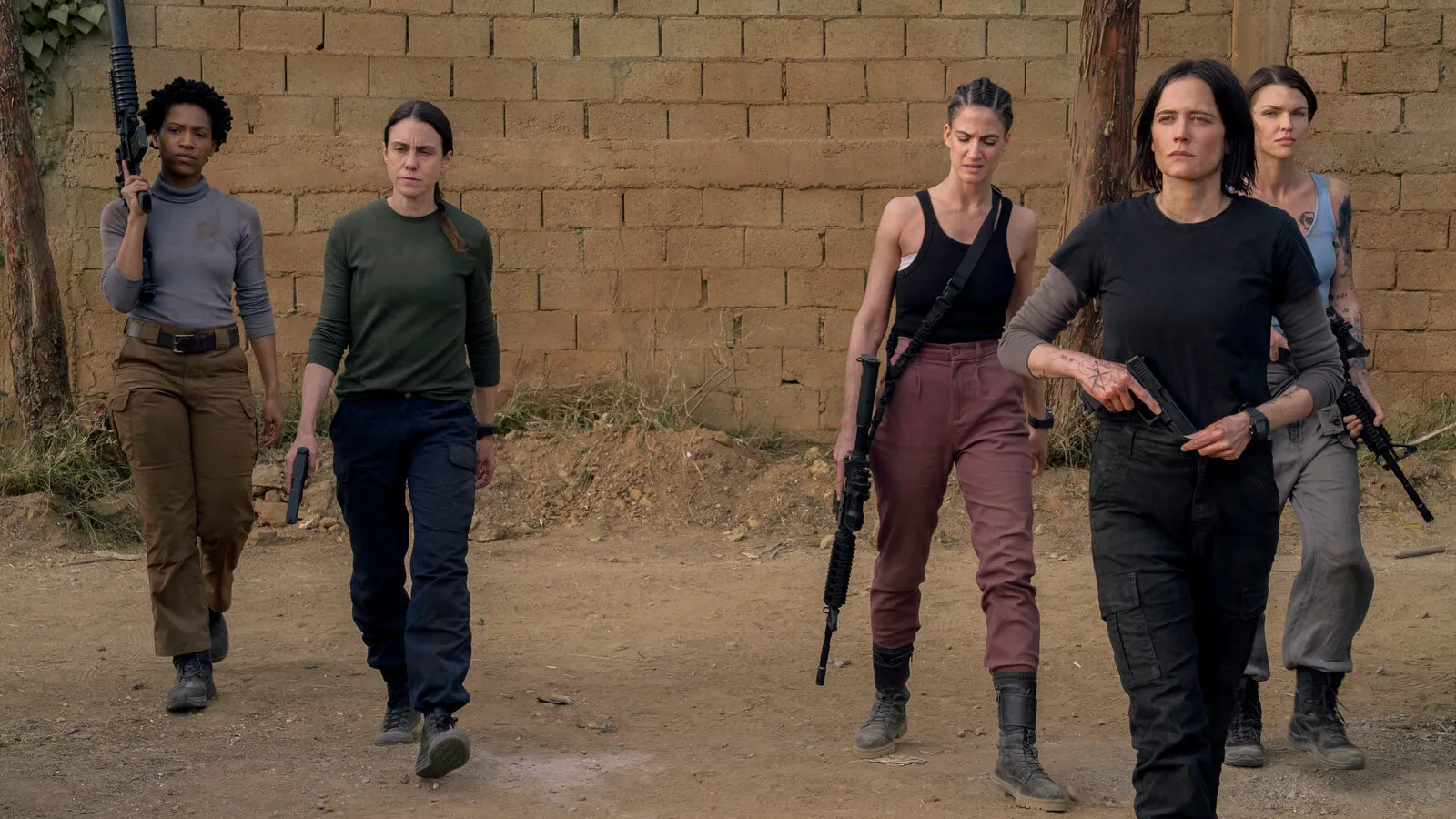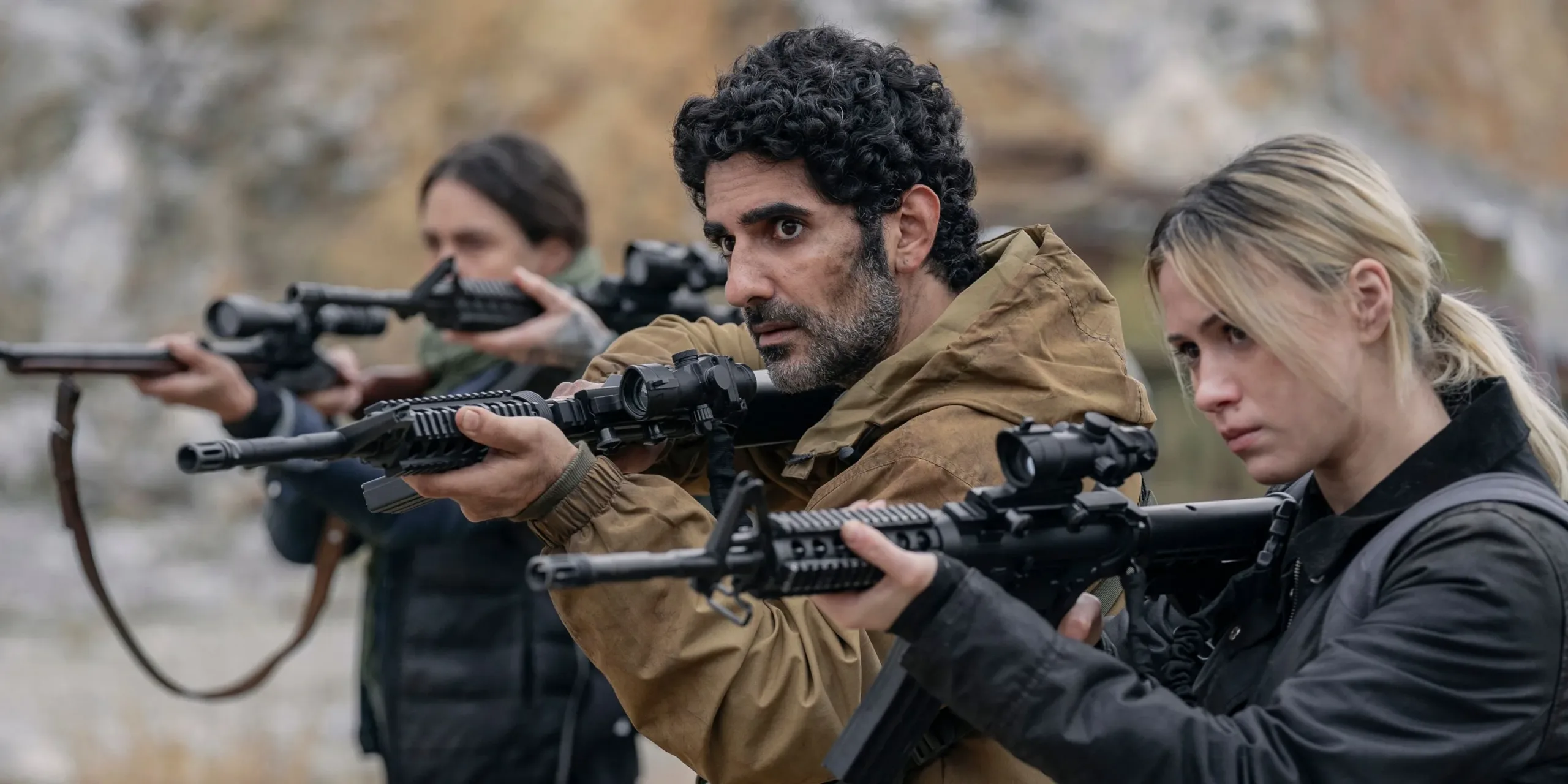In the fragmented world of “Dirty Angels,” we encounter a narrative steeped in disturbing echoes of conflict, in which a group of female soldiers disguises themselves as physicians to navigate the difficult terrain between ISIS and Taliban forces.
This idea unfolds against a backdrop of despair, a world in which the borders between savior and destroyer blur, prompting philosophical issues about the nature of courage and sacrifice. In this cruel theater of war, the troops must deal not just with external opponents but also with the specters of their pasts, haunted by the ghosts of colleagues fallen to violence.
The film’s essential events unfold with a grim determination: the kidnapping of schoolgirls serves as a catalyst, forcing our protagonists into a high-stakes rescue operation. Such episodes, in which the cold indifference breaks innocence of horror, create a dismal atmosphere.
Notable moments, such as the vivid image of girls being thrown from heights, resonate beyond mere shock; they challenge us to confront the moral chasm that underpins such actions. As the narrative develops, the stakes escalate, intertwining personal vendettas with the greater geopolitical chaos, leaving us to ponder: in a suffering world, can redemption ever be attained, or are we only participants in a tragic circle of violence?
Shadows of Redemption: The Complexity of Character
In “Dirty Angels,” Eva Green’s character Jake emerges as a study of resilience and vulnerability. Jake, a soldier formed in the crucible of trauma, embodies the reluctant hero archetype, but her journey is filled with depth beyond simple action tropes.
Haunted by the ghosts of her fallen companions, she grapples with a duality that defines her existence: she is both guardian and survivor, seeking redemption in the face of immense tragedy. Her motivations are more than just a desire to rescue kidnapped girls; they are also intertwined with a desperate urge to restore her humanity, which has been lost in the chaos of war.
As the film progresses, Jake’s leadership is tested, revealing the existential weight of authority. Her judgments are steeped in the moral dilemma of combat, with each option carrying the potential for life or death. The narrative asks us to ponder the responsibilities of authority: what price must be paid when rescuing lives? Green’s portrayal highlights the internal conflict of a woman torn between duty and the haunting phantom of her past, revealing the human spirit’s fragility when confronted with the abyss.
In the shadows of Jake’s quest, the supporting characters emerge, each a thread in the larger tapestry of conflict. Ruby Rose, as the medic, provides insight into the emotional toll of battle, and her character serves as a reminder that healing frequently comes at a cost. Meanwhile, Maria Bakalova, who plays the explosives expert, adds a nuanced layer of complexity, revealing the multiple nature of female empowerment in a typically male-dominated field. Despite their potential, these characters frequently linger in the background, their motivations unexplored, leaving us wanting deeper ties. While the squad relationships occasionally hint at camaraderie, they frequently feel superficial—echoes of shared trauma rather than the genuine bonds created in the crucible of battle. The issue hangs in this narrative: can true unity exist in a world so fraught with chaos, or are we doomed to remain islands floating in a turbulent sea of suffering?
The Art of Conflict: Campbell’s Vision in Shadows
Martin Campbell’s direction in “Dirty Angels” creates a contradiction that mirrors the film’s complicated themes: a senior filmmaker navigating the dangerous waters of action and emotional depth. Renowned for his mastery of the action genre, Campbell creates a tapestry of tension and release.
Still, here, he grapples with the problem of incorporating character moments into a narrative that is frequently ruled by chaos. His ability to mix explosive moments with gentler, introspective pauses serves as a reminder that at the heart of conflict is the human condition, full of pain, courage, and vulnerability. However, one wonders if this equilibrium always has the desired impact or if it occasionally falters under the weight of its ambition.
The cinematography enhances this exploration by using visual narrative approaches that alternate between stark realism and cinematic stylization. The camera glides around Afghanistan’s dusty landscapes, capturing both the raw grit of battle and the eerie beauty of desolation.
Shot compositions express a sense of claustrophobia amid the chaos, framing characters against the expanse of their environment, producing feelings of loneliness and desperation. However, the editing becomes frenzied in moments of high-stakes action, occasionally masking the emotional stakes. This poses a disturbing question: does the relentless tempo of violence risk overshadowing the more profound studies of trauma and redemption? The viewer is left to ponder whether the visual spectacle enhances or distracts from the philosophical questions that linger beneath the surface as the film progresses.
The Dance of Destruction: Choreography of Chaos
The choreography in “Dirty Angels” oscillates between visceral exhilaration and existential dread as the action sequences unfold like a horrific ballet. While the film is steeped in genre cliches, its battle scenes demand study as they navigate the delicate line between spectacle and content.
Each explosion and hand-to-hand battle scene is a vivid reminder of the stakes involved—a physical embodiment of the character’s inner torment. As the dust settles, however, one can’t help but question if these moments of dynamic intensity genuinely resonate beyond the surface.
The choreography, while good, frequently follows old patterns, evoking the stylized violence of modern action films. While Campbell’s direction captures the intensity of action, the sequences often feel outmoded, missing the inventive flair that distinguishes modern classics in the genre. The stunts, while often amazing, occasionally stray into the impossible, raising concerns about the accuracy of realism in depicting human conflict. In an era where action films are frequently distinguished by their intricate designs and philosophical underpinnings, “Dirty Angels” risks being eclipsed by its bold contemporaries, leaving us to ponder the true cost of amusement.
However, action in this film is more than just a series of set pieces; it is integrated into the fabric of character development and narrative momentum. Each encounter carries emotional weight, revealing the protagonists’ flaws, notably Jake, as she faces both external opponents and her damaged psyche.
The pacing, determined by the severity of the battle, occasionally falters, leaving moments of meditation swamped by the relentless march of violence. As a result, we are left with an unpleasant tension: does the action move the narrative forward, or does it hide the deeper, more philosophical inquiries into the human condition that linger just beneath the surface?
Echoes of Conflict: Wrestling with Power and Perspective
“Dirty Angels” attempts to navigate the dangerous seas of modern geopolitics, but its depictions of real-world conflicts frequently feel simplistic and heavy-handed. The film portrays a narrative steeped in the dismal realities of life in war-torn countries, where the specters of ISIS and the Taliban are prominent.
However, its portrayal is often framed via an Americentric lens, simplifying complex cultural relations to a series of tropes that risk reinforcing assumptions rather than questioning them. This raises disquieting issues about art’s responsibility to depict the varied nature of conflict: can a film effectively grapple with such important themes without falling to reductionism?
As the story progresses, the characters wrestle with their positions in this geopolitical drama. Still, their motivations are frequently tied to a narrative of revenge rather than a nuanced exploration of redemption. The ramifications for viewers are substantial; what does it mean to consume a story that reduces the battles of entire countries to the pursuit of personal justice? While ambitious, the film’s geopolitical criticism ultimately calls for a more in-depth analysis of the human experience outside of the battlefield.
In contrast, the film’s representation of female empowerment in a military setting adds complexity to its themes, albeit not without paradoxes. The female soldiers, led by Jake, represent power and resilience, breaking established gender stereotypes in a genre traditionally dominated by male characters.
However, the film’s use of archetypes complicates this empowerment; the characters frequently feel like constructs rather than fully realized individuals. While they handle guns and carry out risky missions, questions linger: do they transcend stereotypes, or do they reinforce the very ideals of femininity that they strive to deconstruct? In exploring these themes, “Dirty Angels” invites us to consider the nature of personal and political power and how it shapes the human experience in various ways.
The Fabric of Reality: Crafting a World in Chaos
In “Dirty Angels,” the set design and settings function as both backdrop and character, heightening the narrative’s tension while anchoring the narrative in an uncomfortable reality. Filmed in the sun-bleached expanses of Morocco and the historical landscapes of Greece, the settings evoke a sense of desolation that mirrors the protagonists’ psychological turmoil.
The decaying structures and bleak landscapes are more than just backdrops; they are visual representations of the conflict that penetrates the characters’ lives. Each decaying wall and dusty road conveys a story of loss and survival, encouraging viewers to consider the weight of history imprinted on the landscape.
However, while the locales have an innate seriousness, one may wonder whether they truly realize their potential within the film’s context. Do these spaces merely serve as a canvas for action, or do they encourage in-depth reflection on the geopolitical narratives that shape them? The film alluded to these complexities but frequently fell into the trap of superficiality, leaving the viewer wanting a more in-depth exploration of the environments that witness human suffering.
In conjunction with the visual aspects, the special effects and sound design create a mood of tension and urgency. The visual effects oscillate between fascinating and distractingly fake art, especially during action moments. CGI explosions, while spectacular, occasionally lack the visceral punch that actual reality gives, prompting existential questions about our connection with virtual violence.
Meanwhile, the sound design immerses the spectator in a cacophony of chaos—gunfire, explosions, and eerie echoes of sorrow resonate, creating a dissonant symphony that emphasizes the film’s darker themes. But does this sonic immersion strengthen our connection to the characters’ suffering, or does it risk becoming a simple spectacle, disconnecting us from human feelings at the heart of the narrative?
Fractured Reflections: The Duality of “Dirty Angels”
emerges as a complicated tapestry woven with strength and fragility. Its exploration of female empowerment amidst chaos is impressive, albeit often hampered by reliance on conventional tropes and cliches.
The film’s action sequences are thrilling but occasionally overshadow the larger existential questions that linger in the shadows. While the set design and sound create an immersive atmosphere, they occasionally serve as diversions rather than complements, leaving viewers wrestling with the tension between spectacle and content.
Ultimately, the film defies the traditions of the action genre, inviting audiences to confront harsher truths about conflict and survival. However, its ambition risks losing sight of the substance of the human experience it seeks to highlight. As viewers engage with its narrative, they may find themselves torn between appreciation for its objectives and frustration with its execution, reflecting the chaotic world it seeks to depict.
The Review
Dirty Angels
"Dirty Angels" bravely attempts to combine action with meaningful themes of trauma and empowerment, but it frequently fumbles in execution. While the film captivates with its visceral imagery and outstanding performances, particularly from Eva Green, it falls prey to genre clichés and superficiality. Ultimately, it encourages thought but fails to deliver a unified narrative that resonates deeply. A riveting exploration of conflict, it leaves viewers wanting more depth in the middle of chaos.
PROS
- Strong performances, particularly from Eva Green.
- Engaging action sequences that maintain intensity.
- Atmospheric set design that enhances the narrative.
CONS
- Relies on genre clichés and stereotypes.
- Superficial exploration of geopolitical issues.
- Inconsistent pacing that can disrupt emotional engagement.
- Visual effects occasionally detract from realism.





















































